The need to change the approach to transport in Slovakia has been discussed for years, however, in practice we are still lagging far behind the countries of western Europe or Scandinavia. Experts at the Sme daily’s conference Modern Trends in Urban Mobility were looking for answers to the question why this is so.
Urban mobility is an area that resonates in many cities in Slovakia. Local governments are addressing it extensively, facing problems and challenges. This area has great potential in terms of improving the quality of life in the cities concerned, as well as generating additional revenue for the functioning of the city itself, according to Miloslav Jurík, chair of the Smart Cities Club, a co-organiser of the conference.
"Mobility is a topic in many countries, which approach it in different ways. Within the Smart Cities Club, we take inspiration mainly from Scandinavian countries and the Netherlands. It's all about a change of mindset and a change of approach to urban mobility. Collaboration across sectors and communication with residents are equally important. Our role is to share experiences. Changes are already taking place in our country, although they are still very slow," said Jurík.
The fact that the interest in smart mobility is growing in Slovakia is confirmed by the growing number of club members. "So far we have 23 members, including five regional capitals and one self-governing region," Jurík added.
Let's look at smart transport in a smart way
The importance of the topic was also confirmed by Rastislav Cenký, director-general of the Transport Strategy Section of the Transport Ministry. "It is interesting not only because there has been a lot of discussion about this topic recently, but urban mobility and smart mobility are also related to greening the environment and saving resources," he said, adding that optimisation of public transport, connection continuity and quality information can address the challenges that affect us.
We should be interested, he said, in how many cars we have on the roads and how much carbon dioxide they produce. "We have strategic documents, plans, resources, but what we don't have is a good strategy. It's as if we don't know what to do in this domain," Cenký noted.
Smart transport, he said, needs to be looked at in a smart way. "To make sure that the projects we are planning are carried out in a way that we not only have the numbers, but that we are delivering on them."
The aim of the Transport Ministry is not only to support public passenger transport, where, according to Cenký, it is working on a comprehensive transport reform, harmonisation and coordination of individual modes, but also to come up with other solutions that will simplify public transport for people. He gave the example of the single-ticket system. “At the same time, however, we don't want to do end-user applications, because the state has always been weak at that and created something that eventually nobody would use."
Cycling must not be just an add-on for us
On the topic of smart transport, he also pointed to the law on public transport, which is now ready for consideration by parliament. "This is a big milestone for Slovakia, we are trying to prepare a national transport agency in cooperation with the self-governing regions and also to coordinate, harmonise, cheapen and improve public transport with affordable resources, and to bring more quality, regular and frequent transport to make it attractive for people," Cenký explained.
Cycling needs to be given its rightful place in our society. We still look at it as an add-on. One of the reasons why this is so, according to Cenký, are the insufficiently prepared cycle paths.
"One of our tasks is therefore to support the development and construction of cycle paths. We have completed the evaluations of the first calls for tenders for the construction of cycle paths worth €30 million, and this year we will announce calls for a total of €80.5 million. I think this will make a significant contribution to the development of cycling and to meeting the objectives. We want to have a higher percentage of cyclists on our roads, and we also want to change the modal split from car transport towards cycling."
Rastislav Cenký also reminded that we must not forget about individual car use. We should encourage people to use public transport more, but at the same time we must try to ensure that the cars that are on the roads produce as little damage and emissions as possible.
"We support the construction of tram routes, the purchase of green vehicles, the construction of intercepting car parks, integrated transport terminals. There are many such projects. Our task is to create basic registers of information, make them available to third parties, while we want to leave the development of applications to optimise connections, search for connections, display of current locations on the map, train delays, to others who are better at it. Our task is to aggregate data, ensure its continuous quality and provide it on an open access basis," Cenký argued.
He concluded his speech by stressing the importance of listening to what cities and self-governing regions have to say, because they are closer to the citizen and know what people and regions need.
Modern cities need modern solutions
The conference also included Lightning Talks, where innovative Slovak companies presented smart transport solutions.
Martin Mikuš, ArcGEO project manager, presented the use of geographical information systems (GIS) and a solution for smart cities.
According to Mikuš, location scanning and processing using GIS brings significant benefits for city management. "It gives us answers to a variety of questions and the ability to manage a number of situations that relate to traffic and the efficient management of the city, the safety of citizens, as well as working with them." Typical questions, he said, are how and where city residents travel and whether there are adequate facilities with sufficient capacity.
"If we want to have a sustainable, transparent and healthy city, we need to use tools that match the current times," Mikuš opined.
The portfolio of methods for smart cities is very broad. One essential component of the system is public transport analysis tools. "They can be used to visualise the frequency and serviceability of lines, showing you where you can get to by public transport. The position of the vehicles can be tracked in real time and continuously evaluated. Likewise, mapping cycling infrastructure is easy with GIS. You can easily map bike racks, signage, bike sharing."
Video technology in cities can improve safety
Asseco Central Europe has recently focused on research and innovation, and the use of video technology in cities. "We're looking to combine our software and technology solutions. We focus on traffic safety, on recognising potholes, collision situations, recording violations of traffic rules," said Patrik Břečka, SMART CITY ACE team leader, adding that in the future there could be what is referred to as an objective road crossing that would be able to record a violation of traffic rules. “This would increase safety; it would be useful, for example, near schools or for cyclists," added Břečka.
Dominik Janík, CEO of Citya, pointed out that 3.4 million people in Slovakia have poor access to public transport. "That means they have to walk about 20 minutes to a bus stop, have to make at least two transfers, and have to travel another 35 minutes to an hour to their destination. We focus on public transport and how to optimise it in regions," says Janík, adding that technology is still underused in public transport planning. "Little data is being used, bus drivers' performance is being wasted, resources are getting more expensive. We don't have enough public transport service outside of city centres. This is what we are trying to address with technology."
We need to offer people options other than their own car. "Our goal is to create operational public transport. In our country, this area is still unexplored. This is a new form of mobility, it can be a minibus or a shared vehicle that stops at public transport stops and can be ordered via an app or a control system, and we try to get as many people as possible into the vehicle at a similar time and on a similar route," Janík said, adding that although this is a new mode of transport in our country, it is already clear that people are willing to change their habits and mindsets.
We are failing to get people out of their cars
Several cities and regions in Slovakia have been trying to develop cycling transport recently, the City of Trnava and the Trnava Self-Governing Region are probably the most successful.
"If we set the basic goal of getting people out of their cars, we need to look at public transport and cycling transport more holistically and do it on a village-city-region line. You probably won't find a mayor of a city or municipality who would say they don't want cycling transport. But then, for example, when changing the zoning plan, we start to see the problems that are holding them back. That is why education is very important", thinks Jozef Viskupič, governor of the Trnava Region.
According to him, the priority is not 10km-long tourist routes, but the building of cycling infrastructure. "We need to know the data, how people are moving, where they want to go, where it makes sense." He says people will use a bike to get to work if it's a 3-11 kilometre trip, but cycling 30 kilometres to work is not comfortable for them. His words were confirmed by the president of Cyklokoalícia (the Cycle Coalition). "In Slovakia, we are in a state where people drive 300 metres. If we can't even convince these people to leave their cars at home, it's naive to think that we can convince those who commute 20 kilometres to work," thinks Dan Kollár.
We lack educated people
The goals we have set for cycling in Slovakia have not yet been met. According to Dan Kollár, there are several reasons. "It's a combination of factors, but what we think is most significant is the lack of knowledge and expertise in the cycling sector. It is only when municipalities want to develop cycling that we often find that, although well-intentioned, they don't know how to do it. Even if something is built, it is often not quite what we would like," says Kollár, adding that Slovakia still lacks such a good cycle path project that we could show to cities as a model. According to the president of Cyklokoalícia, the reason for this may be that the market has not yet produced enough people who would devote themselves to this topic.
The panellists also touched upon the issue of cycling safety in Slovakia. Miloslav Jurík from the Smart Cities Club confirmed that it is not always safe to travel by bicycle in our country. "When you create the infrastructure, those people will come, but you need to improve transport safety, especially from the perspective of the most vulnerable, and answer the question: Would I let my own child or grandmother in an electric wheelchair in there? If the answer to these questions is no, then the cycle path is not properly designed."
The key, he says, is a suitable and safe infrastructure and its connection to other modes of transport so that people can use bicycles for shorter distances and public transport for longer distances, and to make getting around as easy as possible.
Hydrogen as an alternative
One alternative public transport solution is the use of hydrogen as a clean fuel for cities.
"Hydrogen is an innovative product within the Central European region also in the context of the energy situation in Europe. We will be happy to see as many projects as possible where we will be able to use hydrogen as a fuel for urban vehicles," said Marián Nič from Innovation hub East.
According to János Onódi of Mobility and Innovation Production, hydrogen technology is not complex, but it is very well designed. "Our bus runs on electric power, we generate electricity from hydrogen through our fuel cell. Basically, we pour the energy into one container and it does not matter whether it is taken by the battery, because the powertrain does not need it, or, on the contrary, the powertrain generates electricity and it fills the batteries and the fuel cell by recuperation: the result is energy," János Onódi explained, adding that hydrogen as an energy carrier is currently the state-of-the-art and greenest solution. "We don't need batteries to store energy, and it only takes ten minutes to refuel."
Ján Weiterschütz from the National Hydrogen Association of Slovakia stressed that the safety of the hydrogen technology comes first. "Like other fuels, hydrogen is only flammable and explosive when handled carelessly and when the required standards are not met." Hydrogen is a zero-emission fuel, according to Jan Weiterschütz, and it is one of the few ways to achieve carbon neutrality.
We need efficient procurement of innovation
Last year, the Supreme Audit Office issued a report according to which the share of cycling in the total transport in Slovakia is almost negligible, constituting only 5 percent. According to the SAO, the cycling strategy has been implemented only provisionally, there is a lack of data on mobility and infrastructure that would be helpful in monitoring, evaluating and planning new cycling routes, and there is no data on the amount of financial resources invested in cycling.
The national cycling coordinator, Peter Klučka, like the previous speakers, mentioned the lack of education as one of the obstacles to the effective building of cycling infrastructure in Slovakia. "We have put little emphasis on educating the entire cycling community, we have communicated little, we have talked little about what cycling tourism is, what recreational cycling is, and what commuting is. We still did not have a clear idea of how to make cycle paths, even though we had several materials or suitable technical conditions."
He also confirmed that there was a lack of data. "We are developing a data collection methodology so that the data can be used as a basis. An update of the cycling strategy is also being prepared, [and] we want to focus on the issue of managing the whole process of cycling transport and cycling tourism development, so that it is not just up to one person, but is a common interest of all. We need to enhance cooperation and the implementation of a permanent financial mechanism. The missing piece is that the state should provide regular and permanent financial resources to support the development of cycling transport and cycling tourism," Klučka argued.
According to Pavel Kováčik, president of the Association of Construction Entrepreneurs of Slovakia, the lack of an infrastructure construction plan, frequent changes to the rules when announcing calls for tenders, too much focus on EU funds, and not using other sources are the basic mistakes that we keep repeating in Slovakia.
The system needs to be changed
Vladimír Jurík, founder of the Smart Cities Club, pointed out that we want to innovate, but we have a serious problem, we cannot procure these innovations.
"Like green procurement, innovation procurement must be effective. As a city, I can't ask someone to create an original solution for me and say that I legally need two more bids to do it. This is nonsense and it needs to be corrected," said Vladimír Jurík, adding that they would like to start with a methodology for public procurement of individual areas.
"Most contracting authorities fail to define tender criteria, then they resort to the lowest price, which is often uneconomical," Jurík added.
Peter Kubovič, president of the Public Procurement Office, thinks that bureaucratisation and risks are discouraging civil and public servants from carrying out public procurement. "Other countries are going down the path of voluntarism, motivation of workers, training that does not involve sanctions, testing, without the penalties that in our country can even lead to the loss of one’s job. Starting from next year, it was expected that procurement would only be carried out by professionals. We currently have 100 of them and we need 10,000. If we leave it in this form, the system will collapse," Kubovič stated. However, he added that he expects parliament to review the whole system.
Public procurement will play an extremely important role in the whole equation of getting from the call for tenders to implementation of innovation, according to Juraj Hošták, director of the Department of Innovation and Smart Agenda of the Ministry of Investment, Regional Development and Informatisation of the Slovak Republic. "This will really be the result of the work of several groups; we will not be able to decide from the office table, there are several elements to consider, and we also have the experience from the previous programming period."
Author: Sme Konferencie

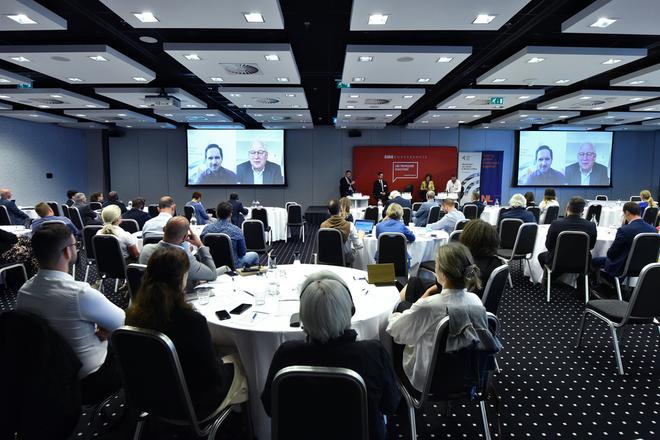 The Sme daily's conference on modern trends in urban mobility. (source: Sme Konferencie)
The Sme daily's conference on modern trends in urban mobility. (source: Sme Konferencie)
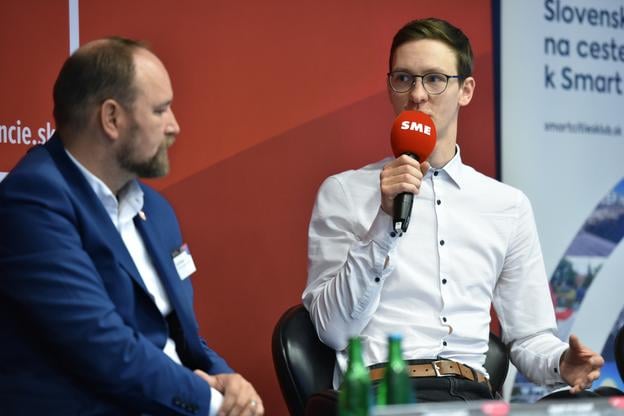 (source: Sme Konferencie)
(source: Sme Konferencie)
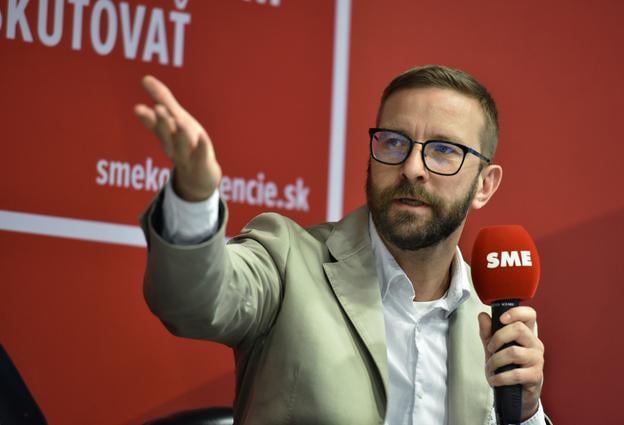 (source: Sme Konferencie)
(source: Sme Konferencie)
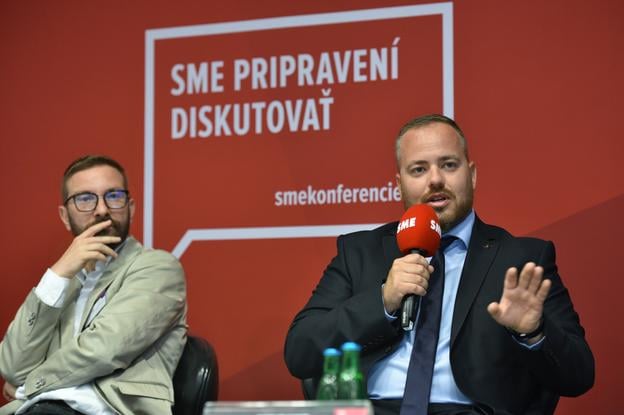 (source: Sme Konferencie)
(source: Sme Konferencie)
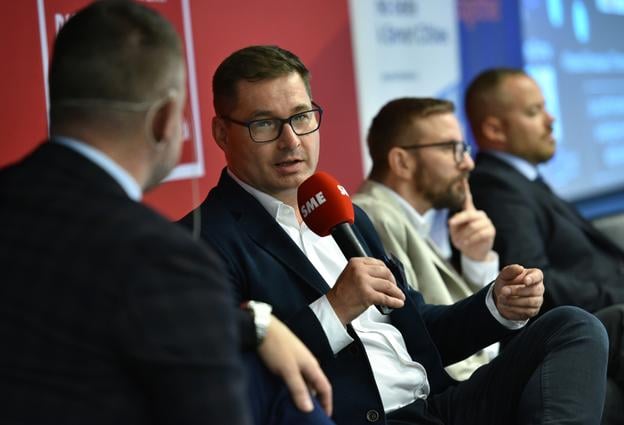 (source: Sme Konferencie)
(source: Sme Konferencie)